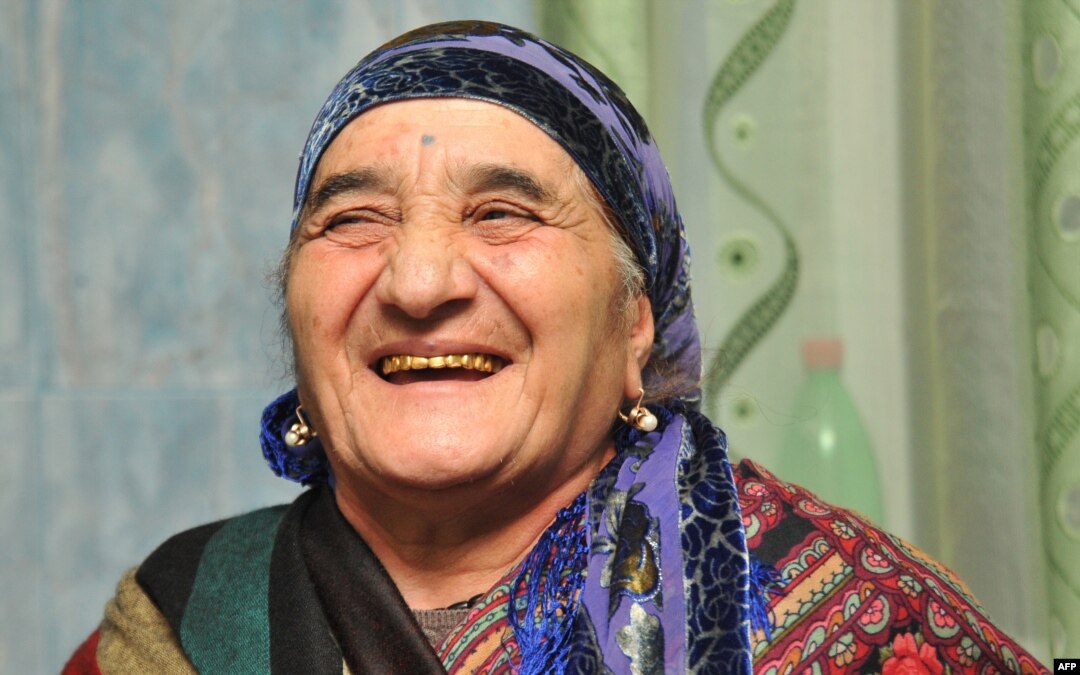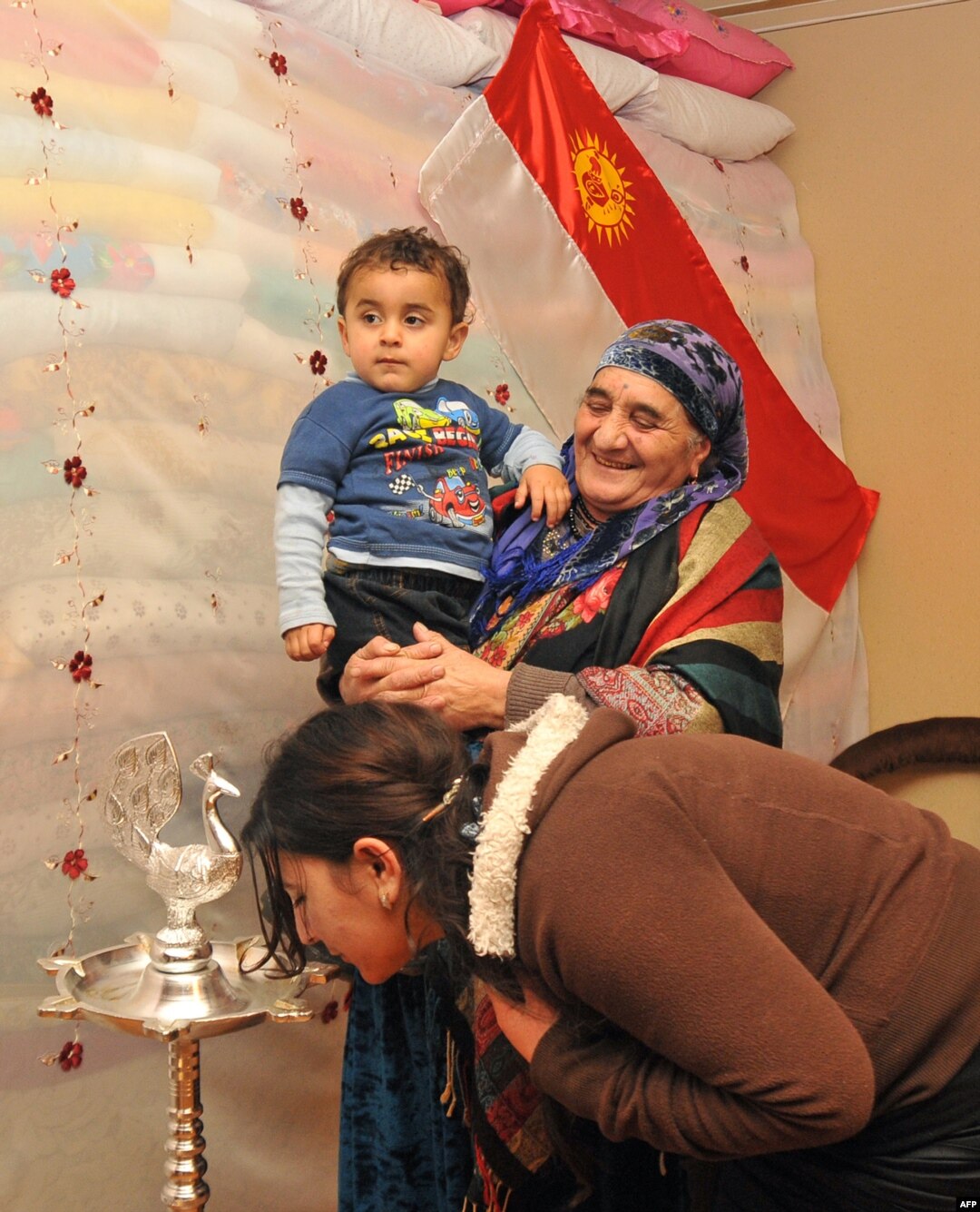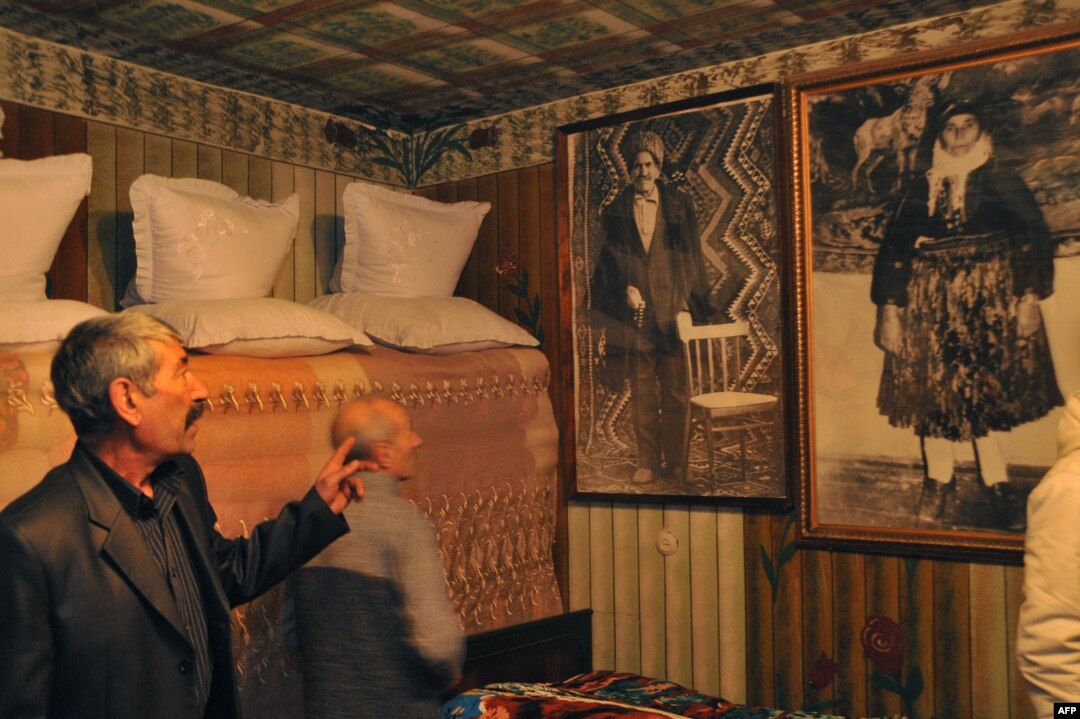A Yazidi Village In Armenia Keeps Its Identity Alive

A Yazidi woman in the Armenian village of Zovuny. Some 40,000 Yazidis live in Armenia; the majority, around 500,000, live in Iraq, and smaller communities live in Russia and Georgia. Tens of thousands more have emigrated to Western Europe.

A young woman kisses a statue of a peacock angel, a central figure in the Yazidi faith. One of the angel's names is Shaytan, or Satan, which has prompted many Christians and Muslims to call the Yazidis devil-worshippers.

A man shows photos of his ancestors. Yazidis speak a dialect of Kurdish and are sometimes described as Kurds who resisted pressure to convert to Islam. They defend their cultural identity as a separate group.
A farmer checks one of his sheep in the village of Zovuny.
According to custom, Yazidi girls marry in their early teens. When the Armenian government moved to raise the minimum age of marriage to 18, the Yazidi community protested against what they called an assault on their culture. Lawmakers compromised to allow Yazidi girls to marry at 16.
Aziz Tamoyan, the director of the Yazidi Union in Armenia
A young woman, Liana Amarian, hangs up washing outside her family's stone home.
The community is largely closed to outsiders, who are not allowed to convert to the Yazidi faith.
Yazidi women prepare dinner at their home.

